|
Di seguito tutti gli interventi pubblicati sul sito, in ordine cronologico.
De la masa lui, seful cel mare bate cu ciocanelul de lemn într-un clopot auriu, iar la sunetul asta cei 20 de rotarieni lasa gluma deoparte, devin brusc seriosi si fiecare se asaza la locul lui. Începe sedinta. Este adunarea obisnuita a Rotary Club Bucuresti, cel mai vechi dintre cele 96 de cluburi Rotary din România. E lege: se întâlnesc în fiecare joi la 7 jumate, la hotelul Marriott. Spun ca discuta despre ce actiuni caritabile sa mai faca.
Astazi parca toata lumea are chef de gluma. "Dumnealui este domnul presedinte Catalin Chiriac-Babei. Ne schimbam între noi la conducere în fiecare an, sa nu ruginim", glumeste un rotarian. Sunt toti îmbracati la patru ace; domnii au obrazul proaspat ras, iar doamnele (vreo cinci la numar) - poarta bijuterii fine si parfumuri discrete. Toti au la rever insigna minuscula în forma de rotita, însemnul clubului. Fiecare dintre ei are în Rotary câte un "nas" - asa îi zice omului dinauntru care te recomanda c-ai fi bun sa fii rotarian. Caci tu singur nu poti sa intri, e musai sa te cheme înauntru un "nas". Si, daca faci prostii în club, nasul e cel care te trage de urechi dupa aia.

La sedinta din seara asta a venit si Dumitru Dorin Prunariu, rotarian din '97, fost presedinte. S-a asezat strategic lânga inginerul Peter Agripa Popescu si susotesc între ei chestii tehnice. Domnului Agripa Popescu îi suna telefonul. "Scuze, am un telefon pe care nu stiu sa-l închid... hehehe, eu sunt generatia BBC. Cum, nu stiti ce înseamna? Born before computer". Si tatal sau a fost rotarian.
Dumitru Prunariu în sedinta cu colegii rotarieni
Tema zilei este balul caritabil cu strângere de fonduri. Pâna atunci, însa, se discuta lucruri simpatice: despre o scrisoare veche a unei matusi, care spunea ca "nu crede vreodata ca Elvetia va ajunge la nivelul României" ("în sus sau în jos?", întreaba colegul), despre prezentarea unei capsule spatiale copiilor, iar Dorin Prunariu vorbeste despre o mare conferinta cu "probleme importante: asteroizi, deseuri cosmice si radiatii".
Îl umfla râsul: "I-am spus la ureche lui Medvedev ca am autografe de la trei sefi de stat ai Rusiei si l-am întrebat daca ar fi de acord sa-mi dea si mie unul. A spus da, ca sa nu ramâna mai prejos".
Râdem, glumim, însa... Seful de club îsi drege vocea si aminteste de bal. "Aoleo, balul!", murmura cineva. Treaba lor e sa-si convinga prietenii sus-pusi sa doneze obiecte importante care sa fie licitate în seara balului. Banii strânsi vor merge la Spitalul Colentina, la Clinica de Ortopedie. Se vorbeste despre obiecte filatelice, vinuri si multe altele. "Auziti, da' trebuie sa fie numai obiecte serioase? N-are nimeni nimic de la Cioran?", întreaba cineva. Dupa o ora, presedintele suna iar clopotul, iar sedinta se termina. Nici nu apuca sa iasa toti, ca si dau navala peste ei "aia mici" de la Interact. Este clubul - pui. "Aia mici" au între 12 si 18 ani si, când vor ajunge la 30 de ani, vor intra si ei în Rotary. Caci asta e prima conditie sa intri în club: vârsta. Dupa care urmeaza multe altele. Care sunt celelalte conditii si ce avantaje ai ca membru Rotary aflati mai jos.
Cum intri în Rotary si cum te alege "nasul"
În primul rând , rotarienii sunt oameni discreti. Ajuta elevii cu burse, strâng bani pentru spitale, ofera carti si multe altele, dar nu prea le place sa primeasca ziaristi pe la sedintele lor. De pilda, la primul club unde am dorit sa vedem o sedinta ni s-a spus nu. Doar numai dupa ce am publicat noi un prim material despre club, ni s-a zis. Oare sa fie rotarienii masoni, asa cum s-a mai spus?
Anca Manea mai sa râda în hohote la întrebarea asta. "Chiar am auzit ca noi am fi avangarda masoneriei. Nici pomeneala!", zice. Este presedinta Rotary Club Bucuresti Atheneum, de profesie medic, si mai demult a intrat si în afaceri. Pâna la urma admite ca unii rotarieni or fi si masoni, dar asta e treaba lor, fiecare e liber sa se exprime cum simte.
Cum poti intra în club: daca ai peste 30 de ani, o cariera frumoasa, ceva recunoastere, daca te-ai remarcat ca ai fi adus vreo contributie societatii prin ceva si daca nu ai imaginea patata, "nasul" te recomanda clubului. Sigur, asta presupune ca trebuie sa-ti fie prieten sau sa te cunoasca, oricum, foarte bine.
Bucataria de club
Perioada de proba este de trei luni. În vremea asta, vii la sedinte, ai idei, propuneri si te zbati sa pui si tu umarul la vreo fapta caritabila. Desigur, înveti statutul, caci exista si asa ceva. Dupa ce primesti insigna si legitimatia de membru, trebuie sa vii la cam toate sedintele si sa-ti platesti cotizatia la zi. Asta variaza în functie de club. În Rotary Club Bucuresti, de exemplu, este de 1.400 de lei pe an. Cine nu-si plateste cotizatia este radiat.
O parte din acesti bani merg la Rotary International, la Districtul 2241 care acopera România si Republica Moldova, iar alte fonduri (inclusiv donatii) pleaca la Fundatia Rotary International. De regula, o parte din banii donati se întorc în club, atunci când acesta vrea sa ajute pe cineva. La nivel international, cluburile au o organizare ca la carte, cu constitutie, manual de procedura si chiar reprezentant permanent la ONU. Deviza Rotary International este: "A servi mai presus de sine". Dar câti rotarieni o si aplica?
Între bataile clopotului - interzis la politica, afaceri si discriminari
"Este interzis sa fortam afacerile între noi. Relatiile, oricum, apar în mod firesc. Dar este interzisa situatia aceasta: suntem amândoi rotarieni, hai sa facem afaceri împreuna! În timpul sedintei, între bataile clopotului, nu este voie sa se faca politica deloc (desi avem si membri din toate partidele), este interzis prozelitismul religios, la fel si discriminarile de orice fel", ne explica Radu Popescu, membru în Rotary Club Bucuresti. Este om de afaceri, a fost presedinte în 2001-2002, iar în "anul rotarian" 2012 - 2013 va fi guvernator al Districtului 2241.
A intrat în club în '96 si se da în vânt dupa viata de rotarian, mai ales ca la întâlniri afla câte-n luna si-n stele: "De la Dorin Prunariu si de la Marius Piso, presedintele Agentiei Spatiale Române, mereu afli tot... pâna si ce va fi cu anul 2012. Iar de la profesorul Vlad Ciurea, fost director al Spitalului Bagdasar - Arseni, am aflat ce greu se formeaza un medic neurochirurg, de abia de la 38 de ani încolo", spune.
Radiat fiindca n-a mai avut bani de cotizatie
Uneori, însa, oricât de nobili ar fi ei prin statut, rotarienii mai calca si ei strâmb. Radu Popescu ne-a spus povestea unui coleg din club care a fost dat afara fiindca n-a mai putut sa-si achite cotizatia: "Avea calificarea de profesor. Când a fost admis în club era primar, asadar avea bani sa-si plateasca si cotizatia. A doua oara a pierdut alegerile, s-a reîntors la catedra si nu si-a mai permis cotizatia. Atunci clubul a decis sa-l radieze, dar eu le-am batut obrazul... Acolo era, de fapt, responsabilitatea nasului. A fost împotriva moralei rotariene, care înseamna prietenie".
Rotary International are o istorie de 106 ani. Cu totul, exista peste 1, 2 milioane de rotarieni în peste 200 de tari ale lumii. Toti acestia sunt organizati în circa 33.000 de cluburi, iar la rândul lor, acestea - în 530 de districte. În România Rotary are câteva mii de membri.
Sursa: gandul.info - Autor: Alina BADALAN TURCITU
Afinele sunt extrem de bogate în vitaminele A, B, C si E si contin minerale ca seleniu, zinc, fier si cupru. Consumul de afine stimuleaza cresterea hemoglobinei si a concentratiei de oxigen din sânge.
Iata câteva amanunte extrem de interesante despre aceste fructe:
- Un studiu efectuat pe soareci a demonstrat ca subiectii care au avut o dieta în care a fost introdusa o pulbere de afine au mai putina grasime în zona abdomenului. Se pare ca afinele au acelasi efect si asupra oamenilor, însa acest lucru nu este înca de necontestat. Totusi, un studiu a aratat ca barbatii care au baut suc de afine salbatice timp de 3 saptamâni au tinut sub control nivelul de glucoza si insulina;

- Consumul de afine - fructe, suc sau vin - previne dezvoltarea coloniilor de bacterii pe tractul urinar. Se previn astfel dureroasele infectii care apar în aceste zone;
- Previn degenerarea si distrugerea neuronilor, iar cercetatorii au observat ca persoanele care consuma afine au o mai buna capacitate de învatare, iar memoria le ramâne nealterata pentru o lunga perioada de timp;
- Anumiti compusi din afine au efect în prevenirea si tratarea cancerului la colon si la ficat;
- Fibrele si antioxidantii fac ca afinele sa fie extrem de utile în prevenirea afectiunilor cardiace. Vinul de afine este la rându-i extrem de util în prevenirea bolilor de inima;
- Riscul de degenerescenta maculara, cea mai frecventa cauza a pierderii vederii odata cu înaintarea în vârsta, scade cu 36% în cazul persoanelor care consuma cel putin trei portii de fructe pe zi.
Sursa: ro.stiri.yahoo.com
Dave Schuit, un apicoltore di Elmwood ha perso 600 alveari. Egli punta il dito contro gli insetticidi noti come neonicotinoidi, che sono prodotti dalla Bayer CropScience Inc. Questo è avvenuto anche dopo un recente rapporto pubblicato dalla Associazione Apicoltori Britannici (BBKA), che ha riportato la più grande perdita di api mai registrata. L’Unione europea ha fatto un passo in avanti, dopo aver bandito diversi pesticidi che sono stati collegati alla morte di milioni di api.
La moria di api è avvenuta dopo la semina del mais. I pesticidi neonicotinoidi sono usati per rivestire i semi di mais con seminatrici pneumatiche. Ciò provoca il diffondersi della polvere del pesticida soffiato quando avviene la semina. La morte di milioni di impollinatori è stata studiata dalla Purdue University. Hanno scoperto che le api hanno mostrato sintomi neurotossici. Hanno analizzato api morte e hanno scoperto che le tracce di thiamethoxam/clothiandin erano presenti in ogni singolo caso. L’unica fonte principale di questi composti sono i trattamenti delle sementi di colture di campo.

Le morie di api sono in aumento esponenziale. Un team internazionale di scienziati guidati dll’ Università di Utrecht dell’Olanda ha concluso che “su larga scala l’uso del prophylaxic in agricoltura, la sua elevata persistenza nel suolo e nell’acqua, il suo assorbimento da parte delle piante e la diffusione attraverso i pollini, mette a rischio la vita degli insetti impollinatori”.

E’ necessaria un’immediata inversione di marcia. Api ed insetti indispensabili per il loro prezioso lavoro di impollinatori continuano a morire e con loro muore anche la natura intera che si rigenera e riproduce anche grazie al loro lavoro.
Questo è solo l’ultimo episodio, purtroppo ci sono tanti, troppi precedenti, Inoltre le sostanze chimiche utilizzate in agricoltura non sono nocive solo per gli insetti e le api ma anche e sopratutto per gli esseri umani.
Fonte: laviadiuscita.net
If you look closely, you may just find the name of one listed among the names of more than 800 scientists from around the globe who have joined forces in an open letter to all world governments, outlining their detailed concerns over the alarming potential threat of biotech’s unauthorized, worldwide GMO foods experiment.

In a country whose government and media appear only too eager to conjure up fear of “bioterrorism” and “biological weapons,” it’s shocking (albeit obviously deliberate) to what extent the GMO issue remains omitted from mainstream discussion. Consider that the message from these scientists seems to be that the whole planet is already under attack by the persistent and largely unchecked, reckless behavior of greedy, unruly U.S. corporations – corporations whose activities appear to be sponsored by the federal government. And whether you know it yet or not, your body is the battleground.
The letter, as posted by the Institute of Science in Society, is a collective call for the immediate suspension of any and all releases of GM crops and products into the environment for at least five years, in order to allow for more thorough testing. The scientists further demand that all patents on life-forms and living processes – including seeds, cell lines and genes – be revoked and banned “for a comprehensive public inquiry into the future of agriculture and food security for all.”
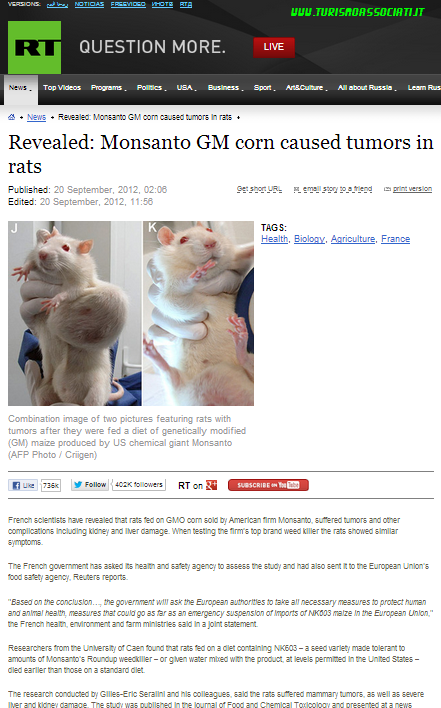
Life is a discovery, they say, not an innovation, and patents on life-forms and living processes “sanction biopiracy of indigenous knowledge and genetic resources, violate basic human rights and dignity, compromise healthcare, impede medical and scientific research and are against the welfare of animals.” Furthermore, they argue that GM crops provide no identifiable benefits either to farmers or consumers; instead, they offer only very significant risks to all living things.
GMOs are just bad news, followed by more bad news
Any consumption of GMO products is basically a smorgasbord of disaster, say these global scientists. In their thorough and fully cited open letter, they take biotechnology to task – making clear, undeniable connections between GM food crops and other products (like milk from cows injected with genetically modified Bovine Growth Hormone) and health problems for mammals in general. At the same time the GM crops themselves actually contribute to lower yields, increased use of herbicides/insecticides, unpredictable performance, poor economic returns, and a progressive monopoly on food by big corporations, they also encourage herbicide-tolerant weeds and pesticide-resistant superbugs, making their purported goal of “feeding the world” appear just as it is – clearly out of the reach of biotech industry. Scientists propose, instead, that these large food corporations are actually more the cause of world hunger currently, than they are the solution to it.
“It is on account of increasing corporate monopoly operating under the globalised economy that the poor are getting poorer and hungrier,” scientists say. “Family farmers around the world have been driven to destitution and suicide… Mergers and acquisitions are continuing.” Seed patent policies currently in place at biotech companies prevent farmers from saving and replanting seeds, an activity the scientists acknowledge, is one enjoyed even by third world farmers.
As promised; however, it only gets worse. Scientists agree that GMOs actually harm the delicate biodiversity necessary to the balance and maintenance of life on this planet. GM products, they say, “decimate wild plant species indiscriminately,” cause birth defects in mammals, kill insects essential to pollination like bees, lacewings, monarch butterflies, and pose other very serious threats related to horizontal gene transfer – for example, the “spread of antibiotic resistance marker genes that would render infections diseases untreatable, the generation of new viruses and bacteria that cause diseases, and harmful mutations which may lead to cancer.”
Multiple hazards to both animal and human health have already been identified by sources around the world, resulting either in bans on GM products or the adoption of strict labeling laws by many countries. Here in the U.S.; however, secret memoranda from inside the FDA have revealed its history of disregarding the warnings of its own scientists. Still, with a separate but similar mass appeal to the United Nations Food and Agriculture Organization in 2009 failing to make a rippled, lasting impact, one can only hope that eventually the science on GMOs – and the growing number of people who know about it – will simply be too loud to ignore.
Author: Summer Tierney - Source: NaturalNews.com via undergroundhealth.com
It’s been quickly retweeted dozens of times, indicating that the idea is interesting to many people. So let’s discuss it in more than 140 characters.

In case it needs saying: Police officers are unlike terrorists in almost all respects. Crucially, the goal of the former, in their vastest majority, is to have a stable, peaceful, safe, law-abiding society, which is a goal we all share. The goal of the latter is … well, it’s complicated. I’ve cited my favorite expert on that, Audrey Kurth Cronin, here and here and here. Needless to say, the goal of terrorists is not that peaceful, safe, stable society.
I picked up the statistic from a blog post called: “Fear of Terror Makes People Stupid,” which in turn cites the National Safety Council for this and lots of other numbers reflecting likelihoods of dying from various causes. So dispute the number(s) with them, if you care to.

I take it as a given that your mileage may vary. If you dwell in the suburbs or a rural area, and especially if you’re wealthy, white, and well-spoken, your likelihood of death from these two sources probably converges somewhat (at very close to zero).
The point of the quote is to focus people on sources of mortality society-wide, because this focus can guide public policy efforts at reducing death. (Thus, the number is not a product of the base rate fallacy.) In my opinion, too many people are still transfixed by terrorism despite the collapse of Al-Qaeda over the last decade and the quite manageable — indeed, the quite well-managed — danger that terrorism presents our society today.
If you want to indulge your fears and prioritize terrorism, you’ll have plenty of help, and neither this blog post nor any other appeal to reason or statistics is likely to convince you. Among the John Mueller articles I would recommend, though, is “Witches, Communists, and Terrorists: Evaluating the Risks and Tallying the Costs” (with Mark Stewart).
If one wants to be clinical about what things reduce death to Americans, one should ask why police officers are such a significant source of danger. I have some ideas.
Cato’s work on the War on Drugs shows how it produces danger to the public and law enforcement both, not to mention loss of privacy and civil liberties, disrespect for law enforcement, disregard of the rule of law, and so on. Is the sum total of mortality and morbidity reduced or increased by the War on Drugs? I don’t know to say. But the War on Drugs certainly increases the danger to innocent people (including law enforcement personnel), where drug legalization would allow harm to naturally concentrate on the people who choose unwisely to use drugs.
The militarization of law enforcement probably contributes to the danger. Cato’s Botched Paramilitary Police Raids map illustrates the problem of over-aggressive policing. Cato alum Radley Balko now documents these issues at the Huffington Post. Try out his “Cop or Soldier?” quiz.
There are some bad apples in the police officer barrel. Given the power that law enforcement personnel have — up to and including the power to kill—I’m not satisfied that standards of professionalism are up to snuff. You can follow the Cato Institute’s National Police Misconduct Reporting Project on Twitter at @NPMRP.
If the provocative statistic cited above got your attention, that’s good. If it adds a little more to your efforts at producing a safe, stable, peaceful, and free society, all the better.
This article originally appeared on the Cato@Liberty blog. Source: policymic.com
The study was published in the Cambridge Journals and it can be found here.

During the study researchers examined the effect of CBD on the hippocampus part of the brain; the hippocampus is a portion of the brain which plays a key role in regulating emotion and memory – it’s the only part of the brain that can grow after someone is an adult.
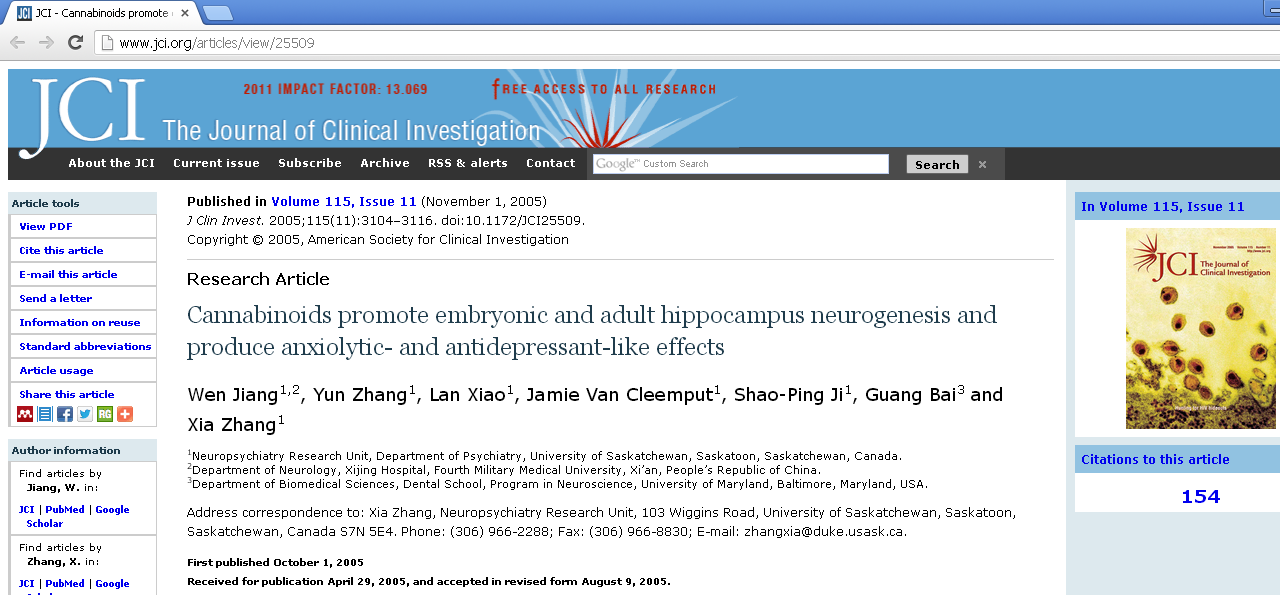
According to researchers, this study (and those like it) opens the door for cannabidiol being used to “manage psychiatric symptoms in disorders such as ageing, stress and neuroinflammation.”
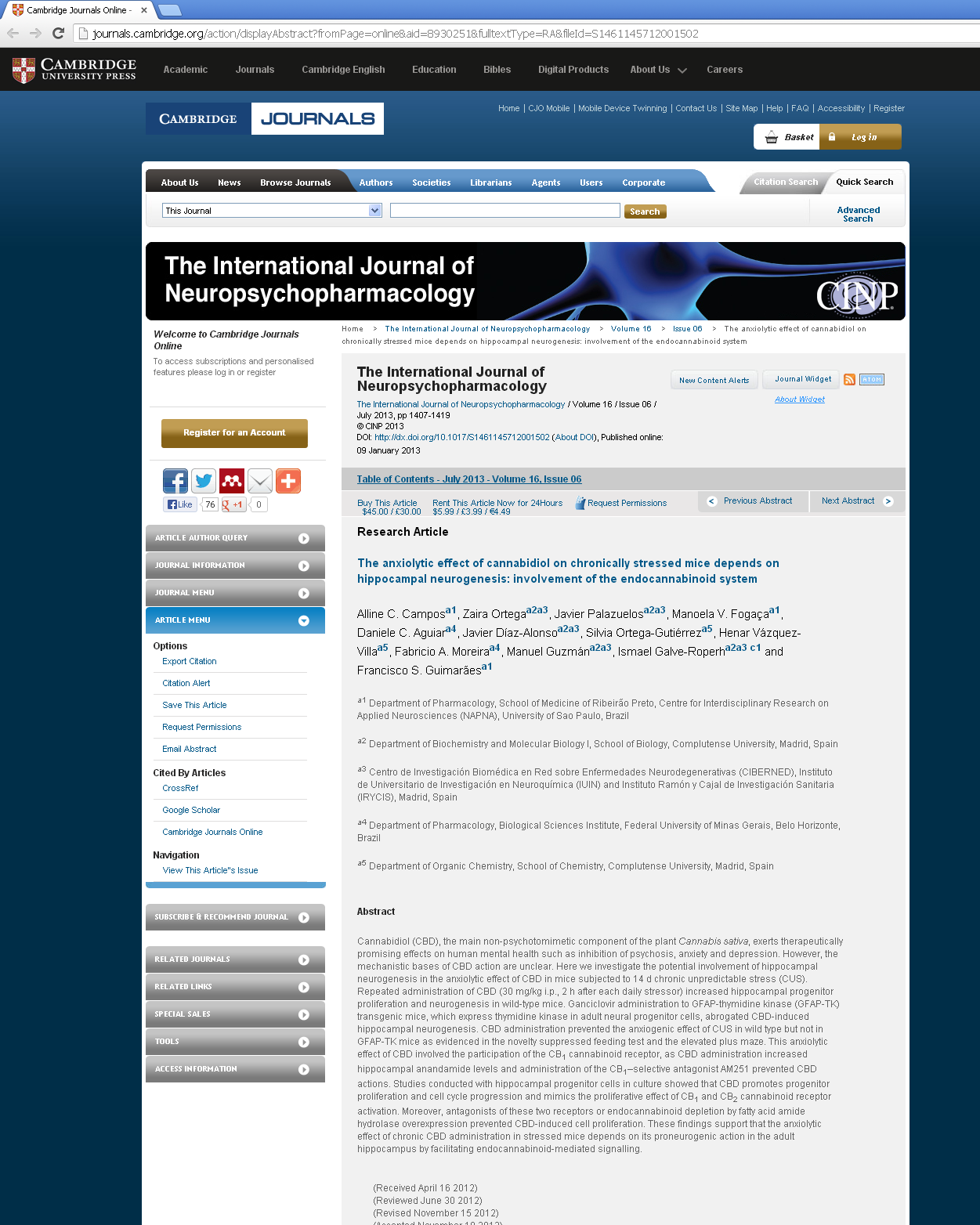
This study is one of the most comprehensive of its type, and confirms a past study from 2005 that found similar results (which can be found in its entirety by clicking here).
Source: TheJointBlog.com via TheWeedBlog.com
These two species of cannabis are widely cultivated around the world for various recreational and medicinal purposes.
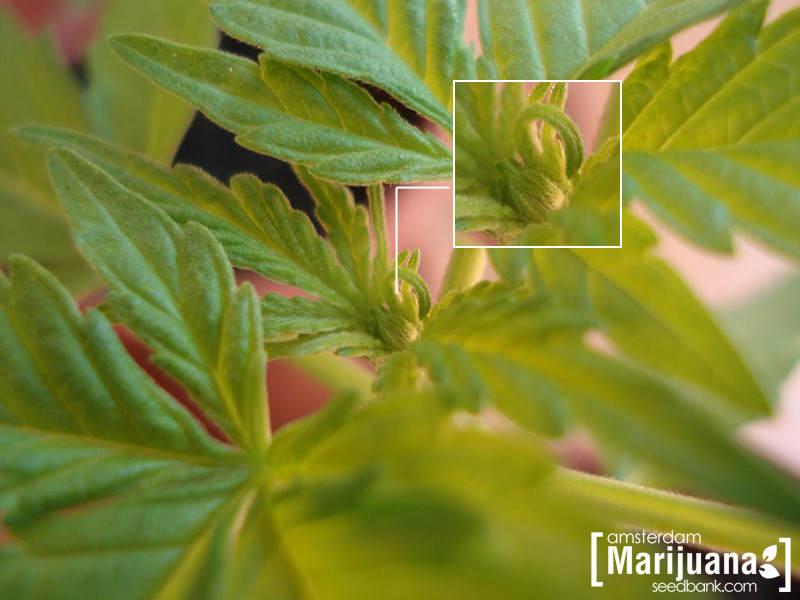
Marijuana and Cannabinoids
The distinct shape of the Cannabis leaf (pictured) is recognized around the world
Marijuana elicits a number of psychoactive and physiological effects on its user, all of which can be attributed to a group of chemicals known as cannabinoids.
The cannabinoids found in plants are sometimes referred to as phytocannabinoids (‘phyto’ = plant) and the female cannabis plant is known to produce over 60 unique cannabinoids when flowering. These flowers (or buds) are the only part of the plant that contain a high concentration of cannabinoids and are generally the only part that is cultivated for use.
Among these cannabinoids are two major constituents of marijuana – tetrahydrocannabinol (THC) and cannabidiol (CBD) – both of which have been thoroughly studied. THC has been the most popularized phytocannabinoid due to its well-known psychoactive effects, which have been attributed to the “high” that marijuana users experience.
Marijuana Intake
Cannabinoids must enter the blood stream to elicit their effects within the human body.
The most common method of intake is by smoking, as the cannabinoids in marijuana can only be released under certain conditions such as high temperatures. When marijuana smoke is inhaled, cannabinoids cross from the lungs to the blood stream within a matter of seconds. Once in the blood stream, cannabinoids enter circulation and begin to elicit their effects by binding to receptors found in various parts of the body.
Marijuana can also be prepared for ingestion, which results in a weaker but longer release of cannabinoids as absorption occurs in the stomach instead of the lungs.
Cannabinoid Receptors (CB1 and CB2)
There are two types of receptors in the human body that cannabinoids can bind to: CB1 and CB2. These receptors exist as part of the endocannabinoid system – the body’s natural cannabinoid system – that includes naturally occurring cannabinoids (endocannabinoids) such as anandamide and 2-arachidonoylglycerol (2-AG).
Phytocannabinoids – such as THC and CBD – are able to mimic the actions of endocannabinoids within the body by binding to the same receptors as they do.
THC has a higher affinity for CB1 receptors, which are most prominent in the brain and spinal cord but are also found in peripheral systems and organs such as the liver, GI tract, and thyroid glands. CB2 receptors are expressed almost exclusively in the immune system but have recently been identified in other parts of the body as well.
Source: truthonpot.com
You should watch this video. Do it.

The song at the end is "All About Me" by Dusty Smith.


I've been getting a lot of condescending messages from "Agnostics" lately attempting to belittle me for being an atheist, but the joke is on you suckers, because you're basically just belittling yourselves.
In fact, early humans depended on hemp plants in order to fulfill an array of basic necessities such as clothes, food, fabrics, rope, paper and more. Even today, hemp is grown and cultivated in over 30 countries for much of the same uses that early human civilizations relied on the hemp plant for.
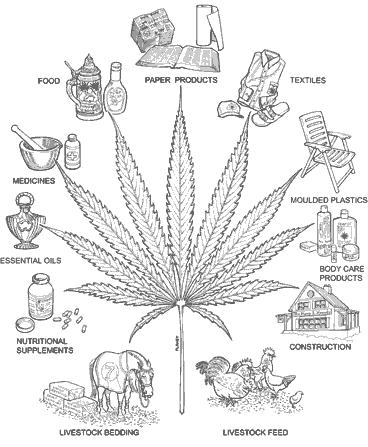
Cannabis sativa
The term ‘hemp’ refers to distinct strains of the Cannabis sativa plant that contain low levels of THC – usually less than 0.3%. Of the 2000 known varieties of cannabis plants, approximately 90% contain trace levels of THC and are useful only for their hemp seeds and fibers. The minimal levels of THC render hemp plants useless for the psychoactive and recreational purposes that cannabis plants are commonly associated with.
Hemp is highly regarded as an agricultural crop for a number of reasons. In addition to its wide range of applications from food to clothes, hemp is one of the fastest growing biomasses known – capable of producing up to 25 tonnes of dry matter per hectare per year. Hemp plants are also environmentally friendly, requiring no herbicides and few pesticides. As well, hemp is a very robust crop and can be grown in diverse soil and climate conditions.
The History of Hemp
Archaeological evidence of hemp use dates back to the Neolithic Age in China, where imprints of hemp fiber were discovered on Yangshao culture pottery from the 5th century B.C. Ancient Chinese civilizations would later use hemp to make clothes, shoes, ropes and an early form of paper.
Eventually, the use of hemp spread to other parts of the developing world. In the Princeton University Press publication entitled Prehistoric Textiles (1992), textile expert Elizabeth Wayland Barber summarizes the historical evidence that Cannabis sativa, “grew and was known in the Neolithic period all across the northern latitudes, from Europe (Germany, Switzerland, Austria, Romania, the Ukraine) to East Asia (Tibet and China),” but, “textile use of Cannabis sativa does not surface for certain in the West until relatively late, namely the Iron Age.”
Hemp was grown and cultivated in Europe mainly for its fibers, and was used for ropes on many ships, including those of Christopher Columbus. The famous explorer was known to carry hempseed on his ships in case of shipwreck, in order to grow raw materials and for use as a food source.
Early settlers in North America brought hemp with them and must-grow laws were eventually enacted that forced all farmers to grow the crop. In fact, the first laws in America to ever address the cannabis plant was a must-grow law enacted in 1619, which forced all settlers in Jamestown Colony, Virginia to grow the plant, since it was such an essential agricultural crop at the time. Similar laws were put in place over the next 200 years, during which time hemp even became a legal tender crop.
Hemp in the US
Hemp was highly regarded by many historic Americans of the time. George Washington grew hemp at Mount Vernon as one of his three primary crops and Benjamin Franklin started one of the first American paper mills by making paper exclusively out of cannabis hemp. Domestic production of hemp flourished until sometime after the Civil War when it began to be replaced by the production of newer materials that were less labor intensive, such as cotton.
The hemp crop received renewed interest during World War II following the 1942 production of a short film entitled Hemp for Victory, which promoted hemp as a necessary crop to win the war. Hemp was used extensively during the war to create textiles such as uniforms, canvas and rope.
Modern Day Uses
Hemp is grown in countries all over the world and is used for a wide array of industrial purposes, including paper, textiles, clothing, biodegradable plastics, construction, body products, health food and bio-fuel.
In 1938, Popular Mechanics Magazine published an article about hemp entitled The New Billion Dollar Crop, which described the usefulness of hemp in producing over 25,000 different products, ranging from dynamite to cellophane. Oddly enough, free production of hemp had already been made illegal a year earlier through the Marijuana Tax Act of 1937.
To this day, hemp remains illegal to grow under U.S. federal law, due to its inherent similarity to the marijuana plant. However, U.S. retailers and manufacturers import approximately 1.9 million pounds of hemp fiber, 450,000 pounds of hemp seeds, and 331 pounds of hempseed oil annually from Canada and other countries that regulate the farming of hemp.
Source: truthonpot.com
Many also believe that the smoke from marijuana poses similar health risks as tobacco smoke, but is this a myth or reality?

Marijuana Vs. Tobacco
The smoke from burning marijuana leaves contains several known carcinogens, similar to those found in tobacco smoke. Worse, cannabis smoke also deposits a hefty amount of carcinogen-containing tar into the lungs – 4 times as much tar as an equivalent cigarette would due to the way marijuana joints are usually rolled (loosely packed and unfiltered).
On the other hand, the smoke from marijuana contains a set of very unique chemicals known as cannabinoids (eg. THC and CBD), which are not found in cigarette smoke. Numerous studies have found cannabinoids to possess potent anti-cancer and anti-tumor effects.
This key difference in the smoke produced by marijuana and that of cigarettes is suspected to play a major role in the different outcomes that marijuana and cigarettes have on the lungs.
What The Studies Show
Over the past decade, two large-scale studies have set out to identify the impact of heavy, sustained marijuana use on the lungs.
The first of these studies was led by Dr. Tashkin – a federal researcher and pulmonary specialist who has conducted over 30 years worth of research on marijuana and the lungs through generous grants from the National Institute on Drug Abuse (NIDA). In 2006, Tashkin co-authored a study involving over 2000 people which showed that, unlike tobacco, marijuana use did not increase the risk of lung cancer, even in subjects who reported smoking over 20,000 marijuana joints in their lifetime.
The second study was published in 2012 by a separate team of researchers from the University of California. It was the largest study ever to be conducted on marijuana smokers and involved a sample of over 5,000 adults. The researchers followed their subjects over a 20-year period and found that regular marijuana smoking – defined as a joint a day for 7 years or a joint a week for 20 years – had no impact on lung function. On the contrary, the results suggested a slight improvement in lung function for regular smokers of marijuana.
Both studies also included a sample of tobacco smokers for comparison and both were able to confirm what we already know – cigarette smoking is directly correlated with lung disease and impaired lung function.
What’s The Explanation?
So what is it about marijuana smoke that makes its impact on lungs so drastically different from cigarettes that even professional athletes are willing to partake in the occasional puff?
Although many experts seem baffled at the results of the two studies mentioned above, Dr. Tashkin believes he may have an explanation. He speculates that the THC molecules in marijuana may be protective of lung cancer by influencing aged cells to die before they can become cancerous.
“We hypothesized that there would be a positive association between marijuana use and lung cancer, and that the association would be more positive with heavier use. What we found instead was no association at all, and even a suggestion of some protective effect.” – Dr. Tashkin
This theory is well supported by the abundance of evidence that demonstrates THC’s strong anti-tumoral and other anti-cancer effects, even specifically in the case of lung cancer.
Other Risks of Marijuana Smoke
Although marijuana smokers may have little to worry about lung cancer or decreased lung function, studies show that marijuana users are still at risk of a disease known as chronic bronchitis.
Chronic bronchitis is characterized by inflammation of the airway, resulting in the following 2 symptoms:
• Persistent cough (a cough that won’t go away)
• Extra mucus (phlegm) production
Studies show that patients without noticeable impairment of lung function can still be suffering from symptoms of chronic bronchitis.
Unfortunately, there is no method of effective treatment for chronic bronchitis caused by smoking. The best method of prevention and treatment is to simply stop smoking – even just for a temporary period of time.
Vaporizing: Is It Safer?
If you suspect you may be suffering from chronic bronchitis but stopping marijuana use is not an option, investing in a vaporizer may be your best bet. A study published in 2010 showed that marijuana smokers who switched to using a vaporizer experienced benefits in lung health that were comparable to quitting cigarettes.
Health professionals recommend the use of vaporizers for all patients who use medical marijuana. Vaporizers allow the plant matter to be heated to a temperature high enough for cannabinoids to be released as a vapor but low enough to avoid the combustion and release of the harmful by-products normally found in marijuana smoke.
By using a vaporizer, the risk of airway inflammation associated with marijuana smoke may be avoided.
Source: truthonpot.com
|